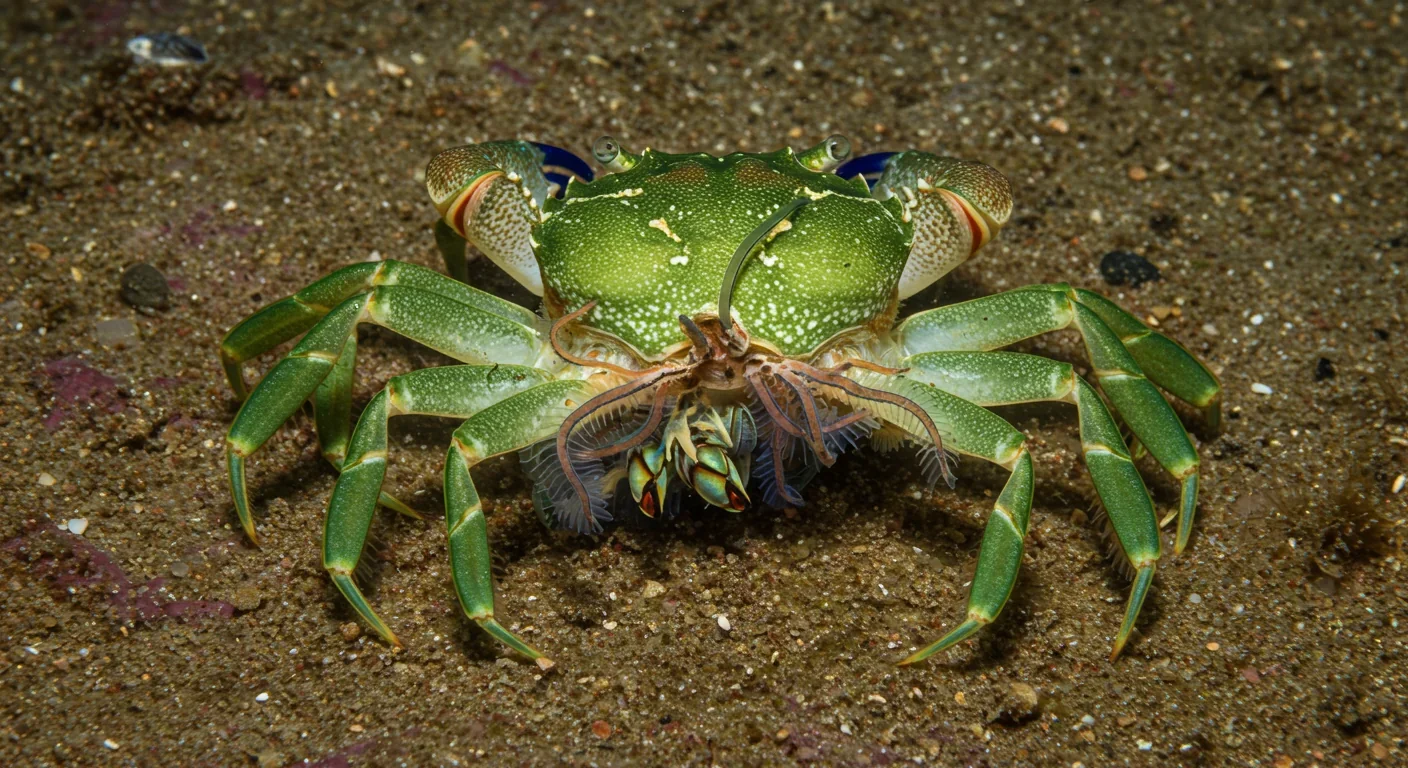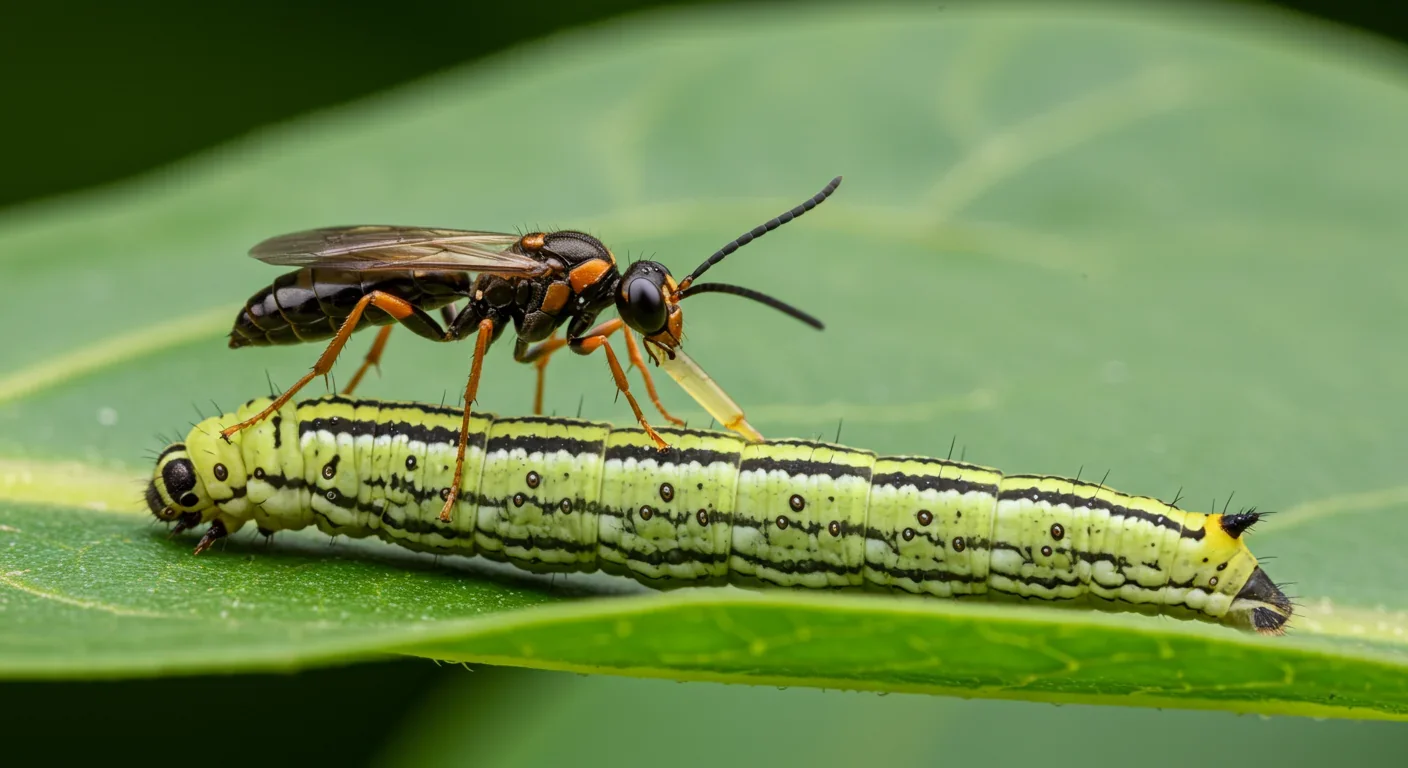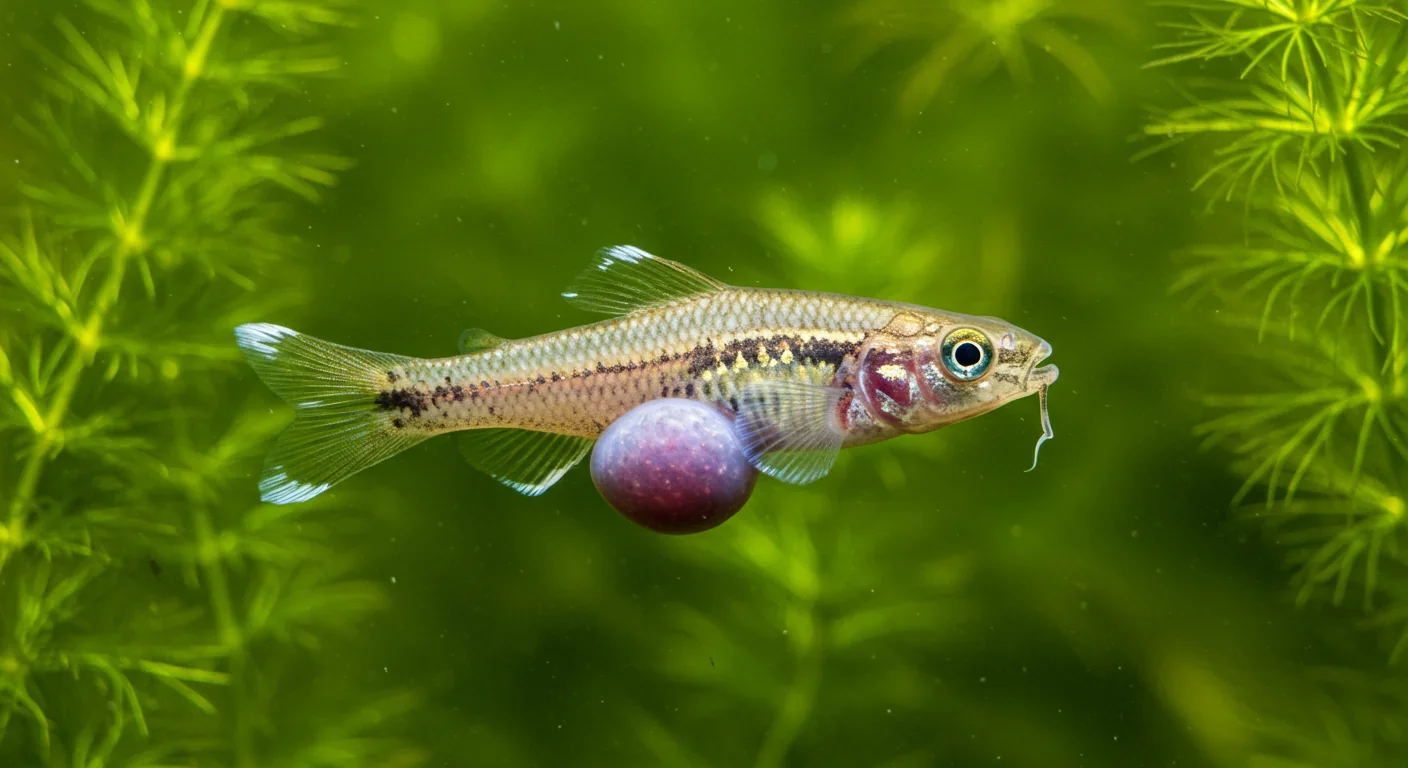Ultrafine Particles Breach Brain Barriers: Hidden Risk

TL;DR: Parasites have evolved sophisticated strategies to hijack host reproduction, from barnacles that chemically castrate crabs to wasps that inject mind-controlling viruses. These mechanisms reshape ecosystems, drive evolution, and offer both risks and opportunities for pest control and disease management.

What happens when reproduction becomes a weapon? Across the natural world, parasites have evolved one of the most ruthless survival strategies imaginable: hijacking their host's reproductive systems, transforming them into unwitting factories for parasitic offspring. This phenomenon, known as parasitic castration, represents biological warfare at its most sophisticated, and it's far more common than you might think.
From barnacles that chemically neuter crabs to wasps that inject mind-controlling viruses into caterpillars, parasitic castration reveals nature's darker creativity. These organisms don't just steal resources. They fundamentally reprogram their hosts, suppressing or redirecting reproductive capacity to serve parasitic ends. The implications stretch from evolutionary biology to pest control, offering insights that could reshape how we understand life itself.
Parasitic castration works through multiple mechanisms, each tailored to specific host-parasite relationships. The rhizocephalan barnacle Sacculina, for instance, infiltrates crabs as a microscopic larva, then grows an internal root system throughout the host's body. This network doesn't just feed on the crab—it chemically feminizes male crabs, broadening their abdomens and altering their behavior to care for the parasite's egg sac as though it were their own.
Trematode flatworms take a different approach. Ribeiroia ondatrae, the frog-mutating flatworm, targets developing amphibians by encysting near limb buds, causing severe malformations. The mechanical disruption or release of growth factors confuses developmental signals, redirecting the host's cellular machinery. Infected frogs develop extra limbs, missing limbs, or fused appendages—deformities that prevent normal reproduction while the parasite completes its lifecycle.
Meanwhile, parasitoid wasps employ viral accomplices. Species in the superfamily Ichneumonoidea maintain a mutualistic relationship with polydnaviruses, which replicate in the wasp's oviducts and are injected alongside eggs into caterpillar hosts. These viruses suppress the host's immune system, allowing wasp larvae to consume the caterpillar from within. The caterpillar continues feeding and growing, but its reproductive future has been erased.
The bacterium Wolbachia demonstrates yet another strategy. Infecting up to 70% of all insect species, Wolbachia manipulates host reproduction through cytoplasmic incompatibility, feminization, male-killing, and parthenogenesis induction. By altering sex determination and reproductive compatibility, it ensures its own transmission through female hosts while eliminating males or converting them into females.
Parasitic castration isn't new. The evolutionary arms race between parasites and hosts has been running for hundreds of millions of years. Parasitoidism evolved only once in the Hymenoptera during the Permian period, roughly 247 million years ago, giving rise to the diverse array of parasitoid wasps we see today.
This deep history has shaped ecosystems profoundly. Throughout evolutionary time, hosts developed increasingly sophisticated defenses—immune responses, behavioral avoidance, physical barriers. Parasites, in turn, evolved countermeasures: immune suppressors, behavioral manipulation, mimicry of host signals. The result is a biological stalemate described by the Red Queen hypothesis: both parties must constantly evolve just to maintain their position in the struggle.
Historical studies reveal that parasitic castration can drive host population dynamics. In areas where R. ondatrae is present, amphibian limb malformation rates skyrocket compared to parasite-free zones. Environmental factors amplify this effect. Eutrophication, for example, increases nutrient levels in water bodies, boosting snail populations that serve as intermediate hosts for trematodes. More snails mean more infected amphibians, creating cascading ecological consequences.
The herbicide atrazine further complicates the picture. Research shows it weakens amphibian immune systems, making frogs more susceptible to R. ondatrae infections. This interaction between chemical pollutants and parasitic pressure illustrates how human activities can inadvertently strengthen parasites' grip on wildlife populations.

When parasites castrate their hosts, they don't just affect individual organisms—they reshape entire ecological networks. Castrated hosts continue consuming resources but produce no offspring, effectively becoming energy sinks in food webs. This redistribution of energy can alter predator-prey dynamics, competitive relationships, and community structure.
Consider the tapeworm Schistocephalus solidus, which infects three-spined sticklebacks. Infected fish show reduced reproductive investment and altered behavior, making them more vulnerable to bird predation—exactly what the parasite needs to complete its lifecycle in avian definitive hosts. The parasite effectively manipulates trophic interactions, using castration as a tool to engineer its transmission pathway.
Parasitic castration also influences sexual selection and mating systems. When significant portions of a population are sterilized, competition for remaining fertile individuals intensifies. This can shift mate choice criteria, alter sex ratios, and even promote the evolution of parasite resistance traits.
In some cases, castration creates unexpected opportunities. Parasitized individuals, freed from the energetic costs of reproduction, may live longer or grow larger than uninfected counterparts. However, this apparent benefit serves only the parasite, which exploits the extended host lifespan to produce more offspring of its own.
Some parasites don't stop at castration—they commandeer host behavior entirely. The lancet liver fluke Dicrocoelium dendriticum causes infected ants to climb grass stalks and clamp their jaws, positioning themselves to be eaten by grazing mammals where the fluke can complete its lifecycle. This "death grip" occurs only at night when grazing is most likely, demonstrating precise environmental timing.
The fungus Ophiocordyceps unilateralis achieves even more spectacular control over carpenter ants. Infected ants exhibit the "death bite," climbing vegetation and biting down on leaves or twigs before dying, synchronized to solar noon. The fungus then grows a fruiting body from the ant's head, releasing spores to infect new hosts. The precision suggests the fungus can manipulate the ant's nervous system with remarkable specificity.
Parasitoid wasps of the genus Glyptapanteles induce their caterpillar hosts to defend wasp pupae after the larvae emerge. The caterpillar, though effectively castrated and doomed, violently protects its parasites from predators and hyperparasitoids. How the wasp achieves this bodyguard behavior remains under investigation, but likely involves neurochemical manipulation.
These behavioral changes often coincide with reproductive suppression. A host defending parasites, climbing to dangerous heights, or making itself conspicuous to predators cannot simultaneously invest in mating and reproduction. The parasite captures both the host's physiological and behavioral resources.
Humanity has weaponized parasitic castration for agricultural benefit. Parasitoid wasps serve as biological control agents against crop pests, with cost-benefit ratios reaching 1:250—every dollar invested in biocontrol yields $250 in agricultural savings. Encarsia formosa, introduced in the 1920s to control whiteflies in greenhouses, remains widely used today.
The application extends beyond agriculture. Wolbachia infections are being used to combat disease-transmitting mosquitoes. By introducing Wolbachia-infected mosquitoes into wild populations, researchers induce cytoplasmic incompatibility that reduces mosquito reproduction or replaces populations with strains less capable of transmitting dengue, Zika, and other viruses.
However, deploying parasitic castration as a tool carries risks. Introducing parasitoids into new environments can trigger unintended consequences if they target non-pest species or disrupt existing ecological relationships. The cane toad disaster in Australia serves as a cautionary tale: introducing organisms without understanding full ecological impacts can backfire spectacularly.
Economic costs also arise from parasitic castration in fisheries and aquaculture. Trematode infections reduce fish reproductive output, affecting commercial catches and hatchery productivity. Understanding castration mechanisms could help develop interventions to protect economically valuable species.
The sophistication of parasitic castration reflects intense coevolutionary pressure. Hosts evolve increasingly complex immune systems; parasites evolve increasingly clever ways to evade or suppress them. This dynamic drives evolutionary innovation at remarkable rates.
Polydnaviruses represent one outcome of this arms race. These viruses, integrated into parasitoid wasp genomes, are transmitted vertically through wasp generations while suppressing host defenses horizontally when injected into caterpillars. This dual transmission mode—genetic inheritance in wasps, infectious spread in hosts—is evolutionarily unprecedented.
Hyperparasitism adds another layer of complexity. Some parasitoids attack other parasitoids, creating up to five levels of parasitism in oak gall systems. Each level potentially involves its own castration dynamics, creating intricate webs of reproductive manipulation.
Sexual reproduction in hosts may persist partly because it accelerates evolution of parasite resistance. The Red Queen hypothesis suggests that genetic recombination through sex helps hosts keep pace with rapidly evolving parasites. Without sexual reproduction, hosts would fall behind in the arms race, making parasitic castration even more devastating.

Understanding parasitic castration mechanisms has medical relevance. Schistosomiasis, caused by blood flukes, affects over 200 million people globally. These trematode parasites alter host immune responses and can impact reproductive health. Insights from parasitic castration research could inform new therapeutic approaches.
Conservation biology faces parasitic castration challenges as well. Amphibian populations, already stressed by habitat loss and climate change, suffer additional pressure from parasites like Ribeiroia. Eutrophication and pesticide exposure exacerbate infections, creating synergistic threats. Protecting vulnerable species requires understanding these interactions.
Wildlife disease surveillance increasingly recognizes parasitic castration as a population-level threat. When significant proportions of a population are sterilized, genetic diversity declines and extinction risk rises. Monitoring parasite prevalence becomes essential for species management.
Emerging diseases present new concerns. As climate change alters parasite ranges and human activity transports organisms globally, novel host-parasite combinations could arise. A parasite jumping to a naive host population could cause devastating reproductive suppression.
Many questions remain unanswered. How exactly do parasites coordinate such precise behavioral and physiological changes? What genetic pathways are manipulated? Can hosts evolve resistance without prohibitive costs? These questions drive ongoing research.
Molecular techniques are revealing mechanisms of host manipulation at unprecedented resolution. Genomic studies of parasitoid venom components, transcriptomic analyses of infected hosts, and proteomic characterizations of parasite secretions are identifying specific molecules responsible for castration.
CRISPR gene editing could enable experimental manipulation of parasite genes to determine which are essential for castration. Such research might identify targets for disrupting parasites in disease or pest contexts, or for enhancing biocontrol agents.
Climate change will likely alter host-parasite dynamics. Warmer temperatures can accelerate parasite development and expand geographic ranges, potentially increasing castration pressure on wildlife. Predicting these changes requires integrating climate models with parasitological data.
Synthetic biology offers speculative possibilities. Could we engineer parasites with reduced virulence for conservation purposes? Could we co-opt castration mechanisms for pest control while minimizing ecological risks? These questions blend biology with ethics, requiring careful consideration.
Parasitic castration forces us to reconsider what it means to be an individual organism. When a crab raises a barnacle's eggs as its own, when a caterpillar defends wasp pupae to its death, where does the host end and the parasite begin? These systems challenge simple notions of biological identity.
They also highlight nature's amorality. Parasitic castration isn't cruel or kind—it simply is, shaped by evolutionary pressures that reward reproductive success regardless of the means. Understanding this helps us appreciate the complexity of natural selection and the diversity of life strategies it generates.
For humanity, parasitic castration offers both risks and opportunities. It threatens wildlife and economic interests but also provides tools for pest management and disease control. Navigating this duality requires scientific rigor, ecological awareness, and ethical reflection.
As we probe deeper into the mechanisms of parasitic castration, we uncover principles that extend beyond parasitology. The molecular tools parasites use to manipulate hosts inform our understanding of development, immunity, and neurobiology. The evolutionary dynamics illuminate general principles of adaptation and coevolution.
Perhaps most importantly, parasitic castration reminds us that reproduction—the defining feature of life—can itself become a contested battleground. In this struggle, parasites have evolved strategies of breathtaking sophistication, transforming their hosts into extensions of themselves. Whether we view this as horror or marvel, it demands our attention and our understanding.
The story of parasitic castration is still being written. Each new discovery reveals additional layers of complexity, each investigation raises new questions. In this hidden world of reproductive hijacking, nature continues to surprise us with its ingenuity and its ruthlessness.

MOND proposes gravity changes at low accelerations, explaining galaxy rotation without dark matter. While it predicts thousands of galaxies correctly, it struggles with clusters and cosmology, keeping the dark matter debate alive.

Ultrafine pollution particles smaller than 100 nanometers can bypass the blood-brain barrier through the olfactory nerve and bloodstream, depositing in brain tissue where they trigger neuroinflammation linked to dementia and neurological disorders, yet remain completely unregulated by current air quality standards.

CAES stores excess renewable energy by compressing air in underground caverns, then releases it through turbines during peak demand. New advanced adiabatic systems achieve 70%+ efficiency, making this decades-old technology suddenly competitive for long-duration grid storage.

Our brains are hardwired to see patterns in randomness, causing the gambler's fallacy—the mistaken belief that past random events influence future probabilities. This cognitive bias costs people millions in casinos, investments, and daily decisions.

Forests operate as synchronized living systems with molecular clocks that coordinate metabolism from individual cells to entire ecosystems, creating rhythmic patterns that affect global carbon cycles and climate feedback loops.

Generation Z is the first cohort to come of age amid a polycrisis - interconnected global failures spanning climate, economy, democracy, and health. This cascading reality is fundamentally reshaping how young people think, plan their lives, and organize for change.

Zero-trust security eliminates implicit network trust by requiring continuous verification of every access request. Organizations are rapidly adopting this architecture to address cloud computing, remote work, and sophisticated threats that rendered perimeter defenses obsolete.